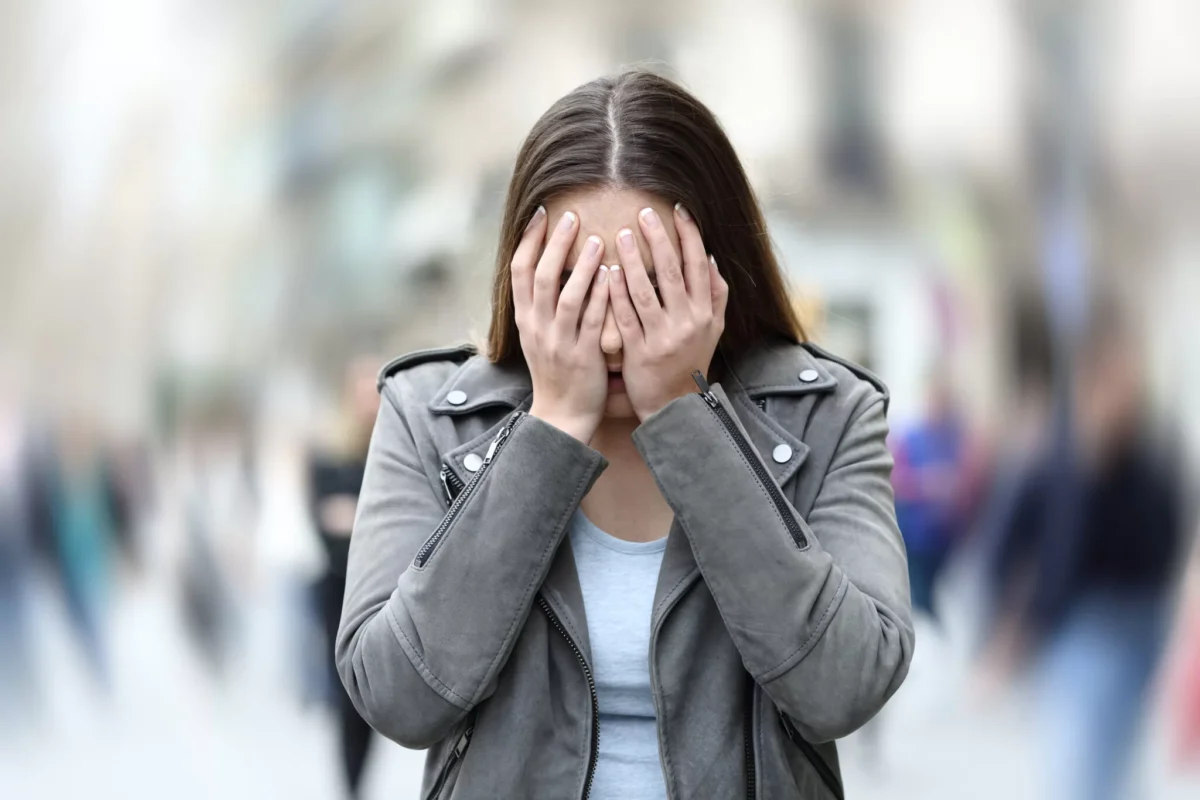Anxiety disorders, which impact millions of individuals globally, are among the most prevalent mental health issues. Although anxiety is a normal and frequently adaptive reaction to stress excessive and ongoing fear or concern that interferes with day to day functioning is the hallmark of anxiety disorders. Identification, management, and treatment of anxiety disorders depend critically on an understanding of their psychological symptoms. This article examines the different psychological symptoms linked to anxiety disorders and offers perspectives on how these symptoms affect people’s lives.
Knowing About Disorders of Anxiety
A variety of ailments are included in the category of anxiety disorders, such as panic disorder, social anxiety disorder, generalized anxiety disorder (GAD), obsessive-compulsive disorder (OCD), and particular phobias
. Excessive dread and anxiety are a common hallmark of many diseases, notwithstanding their variances. Though they might vary greatly, the psychological signs of these diseases typically include excessive, unmanageable concern, illogical anxieties, and avoidance strategies for anxiety-provoking situations.
Typical Signs of Psychological Disorders
1. Overly Concerned and Thinking
Excessive concern is one of the main signs of anxiety disorders. For instance, people with GAD frequently worry excessively about a range of commonplace issues, including their health, their jobs, and their social relationships. This concern is hard to regulate and frequently out of proportion to the real circumstances. Rumination is another typical behavior that involves passively and repeatedly focusing on signs of suffering as well as its causes and effects. This persistent overactivity of the mind can be draining and seriously damage one’s ability to think clearly.
2. Senseless Fears
Phobias, or unreasonable fears, are a primary psychiatric symptom of numerous anxiety disorders. The term “specific phobia” refers to an extreme, illogical dread of certain things or circumstances, such as flying, spiders, or heights.
3. Thinking in Catastrophes
In anxiety disorders, catastrophizing, or catastrophic thinking, is a typical cognitive error. It entails anticipating the worst case scenario in any given circumstance. For instance, a person suffering from social anxiety can think that even the smallest error during a presentation will lead to extreme embarrassment and failure in their career. This kind of thinking feeds the cycle of fear and avoidance and increases anxiety.
4. Over Awareness
The term “hypervigilance” describes heightened sensory awareness and overly intense activities meant to identify potential hazards. Anxiety disorder sufferers frequently experience a persistent sense of agitation as they search their surroundings for possible threats. Due to the mind’s constant emphasis on possible threats, this state of hypervigilance can make it difficult to focus and relax.
5. Declining in Personality and Realization
Dissociative experiences such as depersonalization and derealization can arise in anxiety disorders, specifically in panic disorder and post-traumatic stress disorder (PTSD). Experiencing depersonalization means feeling cut off from oneself, as if viewing oneself externally. Derealization involves sensing that the outside world is distorted or unreal. These encounters can be unnerving and add to a feeling of being powerless.
6. Compulsions and Obsessions
Although they are typical of OCD, compulsions and obsessions can also exist in other anxiety disorders. Obsessions are unwelcome, bothersome thoughts, pictures, or cravings that result in a great deal of anxiety. Repetitive actions or thoughts carried out as a coping mechanism for obsessions are known as compulsions. These customs can take a lot of time and get in the way of everyday life.
7. Dysregulation of Emotions
Difficulties in controlling and reacting to emotional events are referred to as emotional dysregulation. Anxiety disorders can cause a person to feel strong and fluctuating emotions, such as fear, anger, sadness, and frustration. This emotional turbulence can strain bonds and make it more difficult to handle day-to-day challenges.
8. An obsession with perfection
Perfectionism is a psychological feature that is frequently seen in anxiety disorders, especially in OCD and GAD. Perfectionists have extremely high expectations for oneself and are afraid of making mistakes or falling short. This can worsen anxiety symptoms by causing procrastination, continuous tension, and a fear of failing.
Psychological Manifestations’ Effect on Day-to-Day Living
The psychological symptoms of anxiety disorders can significantly affect a person’s life in a number of ways, including:
1. Individual Connections
Relationship problems might arise from anxiety disorders. Maintaining healthy connections with family, friends, and partners can be challenging for persons who exhibit excessive concern, anger, and avoidance habits. Isolation and trouble making and sustaining social connections are particularly common outcomes of social anxiety disorder.
2. Work and Academic Achievement
Academic and professional performance might be negatively impacted by the emotional and cognitive signs of anxiety disorders. Ineffective concentration, catastrophic thinking, and perfectionism can all be obstacles to success and productivity. Procrastination and absenteeism brought on by anxiety can also have a detrimental impact on academic and professional objectives.
3. Physical Well-being
Physical health can suffer from long-term anxiety. Anxiety-related stress responses can result in physical symptoms such headaches, gastrointestinal problems, tense muscles, and exhaustion. Chronic stress can eventually lead to more severe health issues including cardiovascular disease.
4. Life Quality
Anxiety disorders have a substantial impact on overall quality of life. A lowered sense of wellbeing and enjoyment of life might result from ongoing mental pressure and emotional distress. Anxiety can cause people to shun things they used to like doing or to miss out on significant life events.
Techniques for Handling Anxiety’s Psychological Symptoms
A multimodal strategy is necessary to manage the psychological features of anxiety disorders. Here are a few successful tactics:
1. CBT, or cognitive-behavioral therapy
Anxiety problems are successfully treated with cognitive behavioral therapy (CBT). It focuses on recognizing and combating harmful mental patterns and actions. People can learn to reframe ideas, lessen catastrophic thinking, and create healthy coping mechanisms using cognitive behavioral therapy (CBT).
2. Meditation and Mindfulness
People can learn to be more conscious of their thoughts and emotions without becoming overcome by them by engaging in mindfulness and meditation techniques. These methods can lessen the severity of anxiety symptoms while also encouraging relaxation.
3. Exposure Counseling
4. Drugs
Medication could be required in specific circumstances to control anxiety symptoms. The severity of symptoms can be lessened with the aid of beta-blockers, antidepressants, and anxiety medicines. To choose the best course of action, it’s critical to collaborate with a medical expert.
5. Modifications in Lifestyle
Anxiety management requires a healthy diet, regular exercise, and enough sleep. Exercise in particular has been demonstrated to release endorphins thereby lowering anxiety and elevating mood. Moreover regular physical activity not only benefits mental health but also improves overall well-being.
6. Counseling and Support Groups
Counseling and support groups give people a forum to talk about their experiences and get advice from others going through similar difficulties. Expert counseling can provide extra assistance and anxiety-reduction techniques.
7. Techniques for Stress Management
Stress management and anxiety symptoms can be lessened with the use of techniques including progressive muscle relaxation, deep breathing exercises, and visualization. Including these methods in everyday activities can help people feel more at ease and healthy.
In summary
Anxiety disorders are multifaceted illnesses that can present with a variety of psychological symptoms. These symptoms can have a substantial influence on a person’s day-to-day functioning, ranging from excessive concern and unfounded anxieties to catastrophic thinking and emotional dysregulation.
People can control their anxiety and enhance their quality of life by combining support, lifestyle modifications, and therapy therapies.




